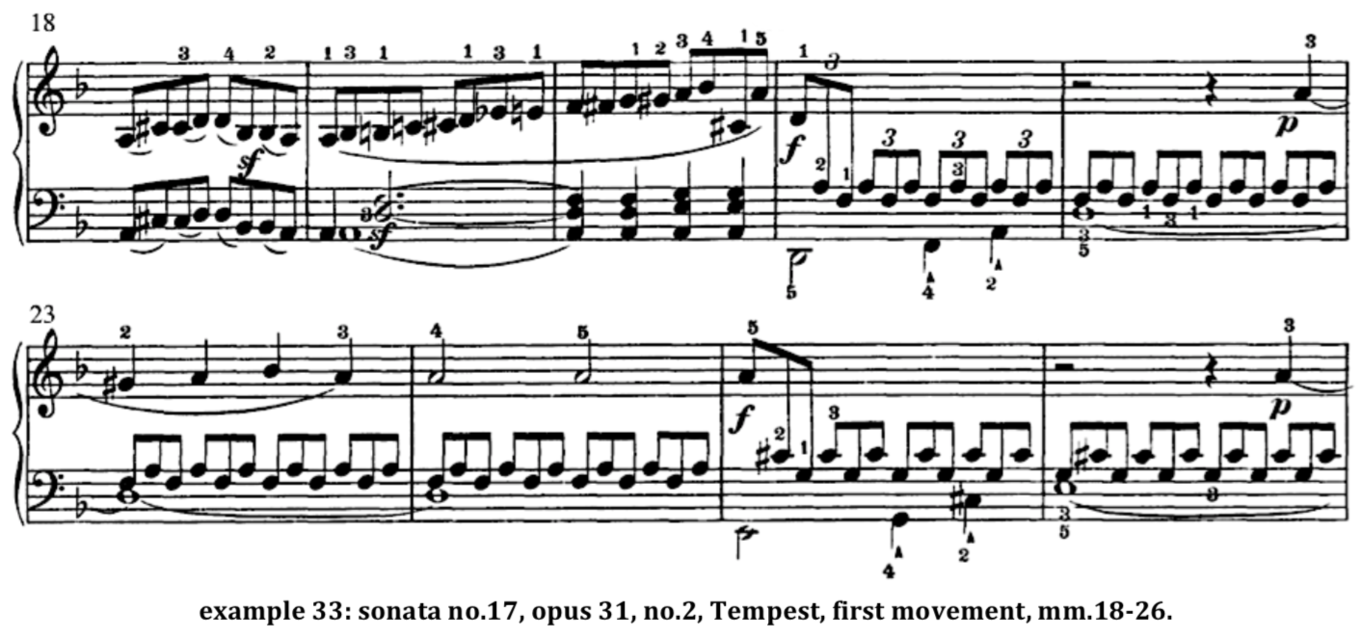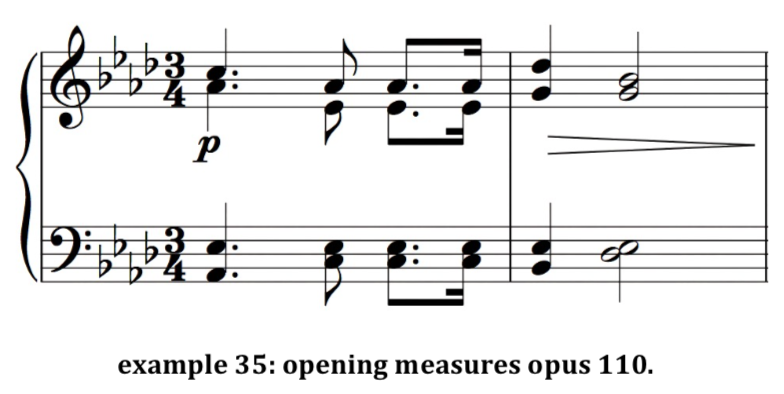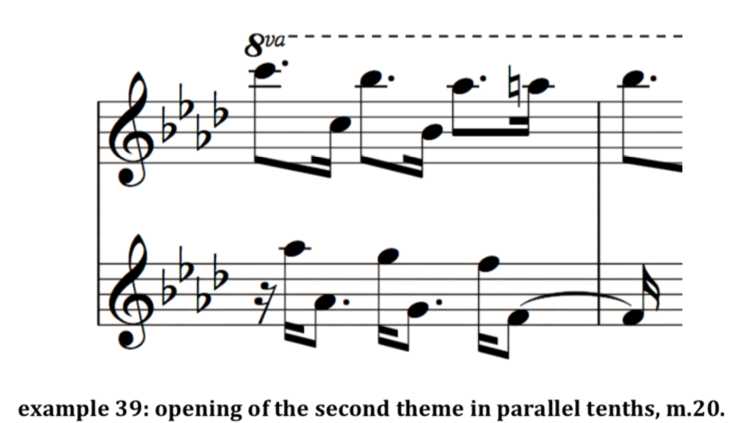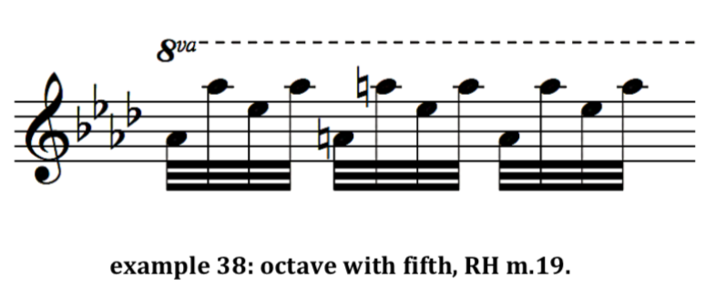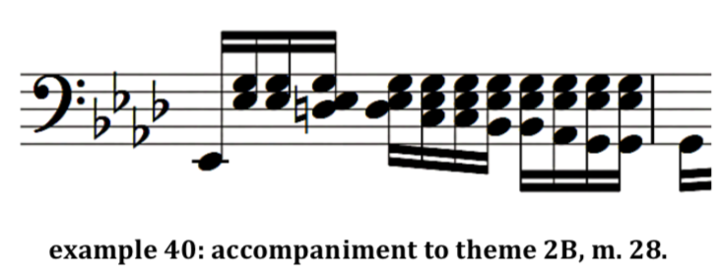The transition continues and as the harmonic rhythm speeds up, Beethoven alters the figuration from m.19 onwards:
2.3.2 Specific examples from the first movement of opus 110
The opening measures contain a four-part setting that is rather unusual as the opening of a sonata. Furthermore the distance between the alto and tenor is larger than what we would expect in this kind of choral voicing.
2.3 Beethoven’s textures and figurations
2.3.1 General examples from different piano works
It might be very useful to make a complete categorization of Beethovenian figurations or textures in his sonatas. Are they very specific or rather general? Examining all figurations or textures in the 32 piano sonatas is an investigation in itself. In his doctoral thesis Beethoven’s Experimental Figurations and Exercises for piano Derry1 gives an extensive overview of categories to organize the different figurations. It is not the purpose of this research to do this. Therefore I suffice to show some - in my opinion - typical figurations that Beethoven does not use in the 1st movement of opus 110.
In the first movement of sonata n.8, opus 13 the following texture is applied:
In m. 20 the second theme appears in a texture of parallel tenths with a specific rhythmic texture as well:
Another accompaniment texture that is worthwhile mentioning because of its specificity is the one in example 40 below:
In the first movement of the sonata no.9 in E major we see an accompaniment figure that creates a Beethovenian drive forward. The repeated bass tone of each chord on the beat creates a restless momentum.
As a second example of the specific textures in opus 110 below you see the accompaniment of the main theme form measure 5 and onwards.
In measure 11 follows an important arpeggio figure that plays a major role in the first part and returns several times. It is an Alberti bass figure that is repeated over several octaves, but in this case it is played by the right hand. This results in a kind of signal tones that come forward. The root note and the fifth of the chord are prominently present in the figuration of example 37.
It is a four-part texture with tremolo like movement in alto en tenor, the other voice provide a kind of signal tone. In m.93 we see a similar movement within the octave but now the four-part texture is present in a more implicit way.
The next example is from the Tempest sonata and shows similar tremolo’s to the ones in example 32, but the rhythm is altered here changing the mood significantly. Next to that we see a dialogue between bass and soprano, while the tenor sustains the tremolo’s.




